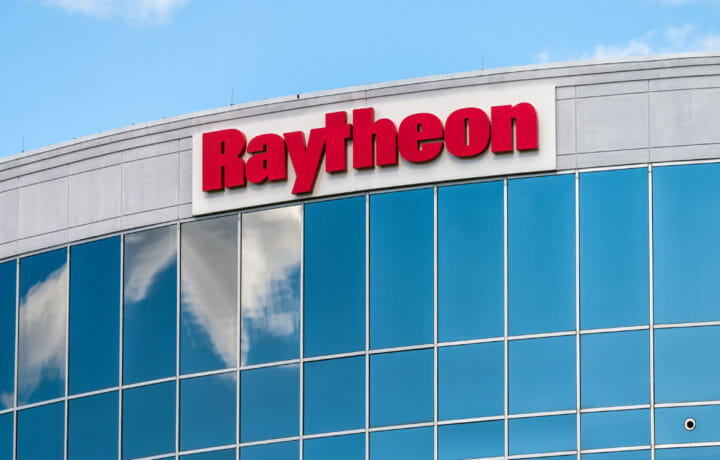The United States Space Force this week awarded a prime contract to Raytheon Intelligence & Space to develop a prototype Missile Track Custody (MTC) system, the service’s first Medium Earth Orbit (MEO) missile tracking system. Under this contract, Raytheon Intelligence & Space will serve as the prime contractor, developing and delivering a space vehicle, hosting a state-of-the-art missile tracking mission payload and ground-based command and control and mission-data processing elements.
RI&S will team up with Lockheed Martin to integrate the MTC payload onto the aerospace giant’s mid-size LM400 satellite bus.
In addition, RI&S will develop a ground-based command and control system for missile tracking prototype that will be based on its Future Operationally Resilient Ground Evolution Mission Data Processing Application Framework (FORGE MDPAF).
Raytheon’s FORGE MDPAF is a ground system framework that collects and processes data from satellites, including Overhead Persistent Infrared (OPIR) space vehicle data from both Space Force’s Space-Based Infrared System (SBIRS) constellation and the future Next-Generation OPIR constellation.
Development of the MTC
The U.S. Space Force established the MTC program to accelerate the fielding of a resilient persistent detection and missile tracking capability from MEO. It was developed using model-based systems engineering significantly increasing the speed of development while reducing cost.
“This is an advanced solution to counter emerging missile threats facing our country,” said Roger Cole, executive director of Strategic Systems programs at Raytheon Intelligence & Space. “From its MEO perch, our system will enable Space Force to accurately detect and track adversarial hypersonic weapons with precision accuracy.”
Mission Success
Last November, RI&S’s mission payload passed a critical design review, which was seen as a significant step forward as the MTC program seeks to deploy initial warfighter capability for missile tracking at MEO – the Earth-centered orbit with an altitude above a low Earth orbit (LEO) and below a high Earth orbit (HEO) – between 2,000 and 35,786 km (1,243 and 22,236 mi) above sea level.
MEO has historically been used for GPS and other navigation applications
Currently, the U.S. conducts missile warning and tracking from highly-elliptical and geostationary orbits and plans to expand the capability to low Earth orbit in the coming years. MTC has been seen as another layer to the missile warning, missile defense and missile tracking architecture that provides the ability to detect and maintain custody of emerging missile threats, while also providing large area coverage with fewer sensors than LEO solutions.
Partnership With Lockheed Martin
The MTC will next be integrated with an LM400 satellite bus, part of Lockheed Martin’s modernized family of satellite designs, emphasizing commonality, rapid production speed, and reduced costs. It includes SmartSat, software-defined satellite capabilities that allow it to adapt to changing mission needs and deploy new capabilities to stay ahead of evolving threats.
“Lockheed Martin is excited to provide our mid-sized, rapidly-producible LM400 bus to Raytheon, supporting our customer’s mission to deliver initial warfighting capability with Missile Track Custody Epoch 1,” said Mike Corriea, vice president of Lockheed Martin’s Overhead Persistent Infrared mission area.
“Lockheed Martin will leverage a full suite of digital engineering tools to produce satellites that are dramatically more responsive and flexible, at a fraction of the cost and delivery time for our customers,” added Corriea.
The joint team next plans to complete a system critical design review by the end of this year, followed by a build, integration, and test campaign to deliver capability to orbit by 2026. Work for this program will be executed in El Segundo, California, and Aurora, Colorado.
Domain of the Guardians
Last fall, the Space Force also announced a major procurement of satellites – a constellation in MEO that could track missile launches. This would add a new layer to the Pentagon’s planned multi-orbit architecture of space sensors.
The Department of Defense (DoD) decided to add MEO satellites to the missile-defense architecture as an additional way to provide extra eyes on enemy hypersonic missiles. Compared to current sensors in geostationary satellites, sensors in MEO could see closer to Earth and track a wider area than satellites in low Earth orbit.
The U.S. Space Force was established on Dec. 20, 2019, when the National Defense Authorization Act (NDAA) was signed into law (with bi-partisan support), creating the first new branch of the armed services in 73 years. The establishment of the USSF resulted from widespread recognition that Space was a national security imperative. When combined with the growing threat posed by near-peer competitors in space, it became clear there was a need for a military service focused solely on pursuing superiority in the space domain.




